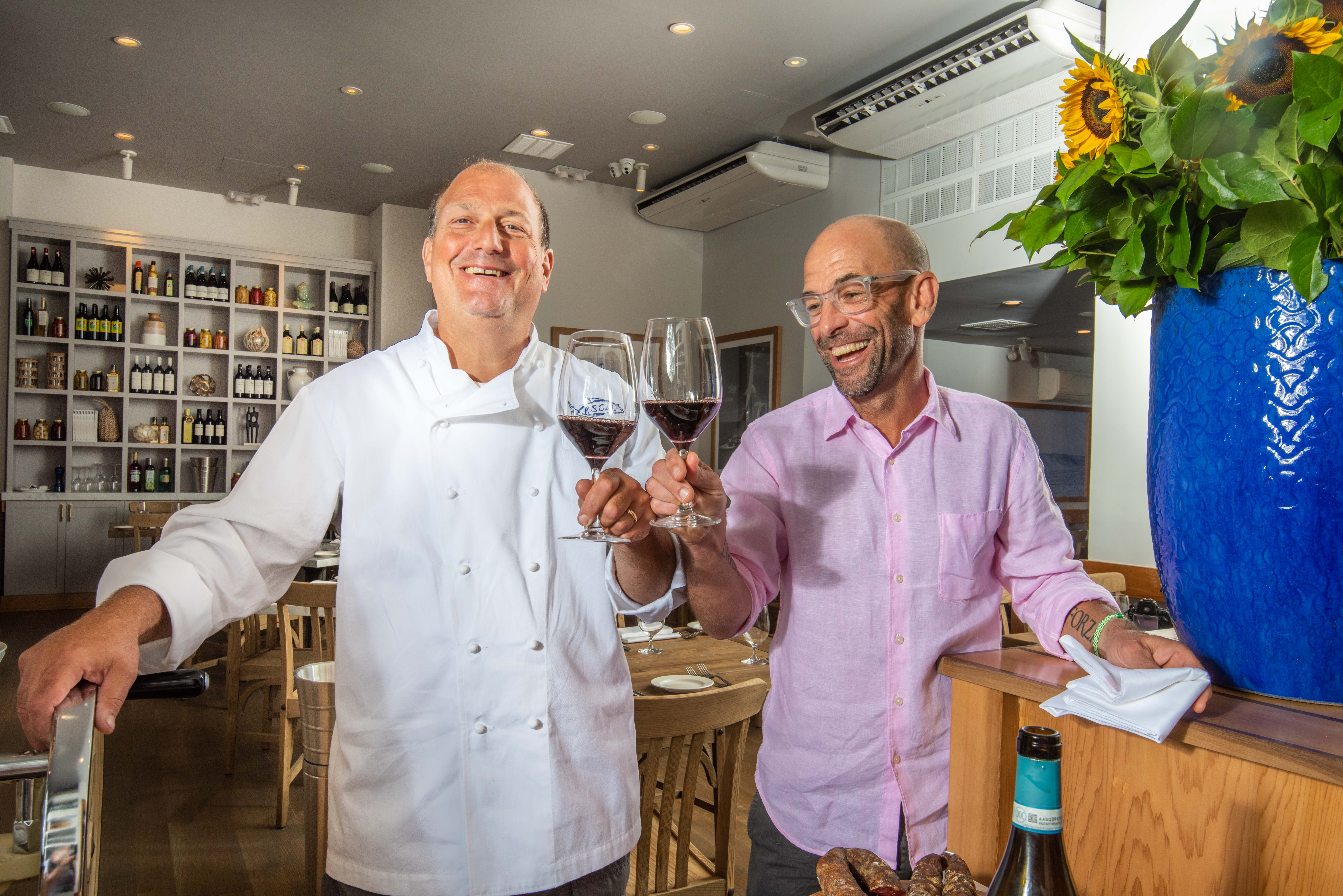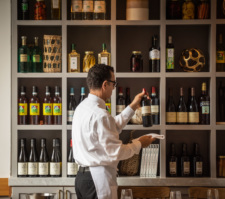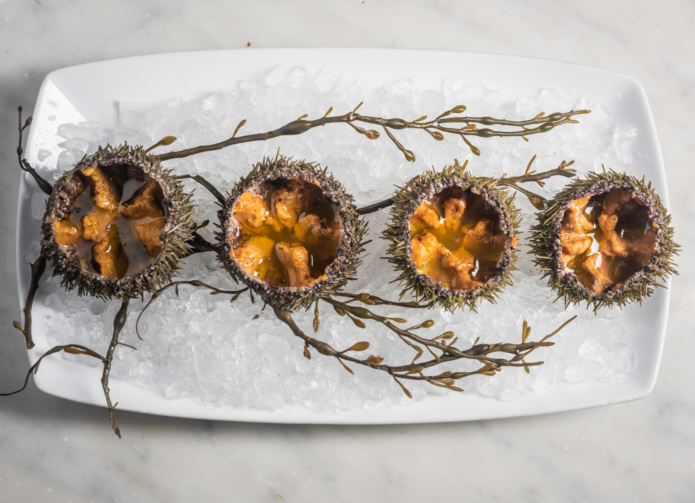
Meet The Duo Behind Esca’s Stellar Second Act
It’s not often that a restaurant survives two decades in New York City. Esca doesn’t plan to take that for granted.
“I’ve got a customer that lives in the building who is in his 20s; he started coming here when he was four years old with his parents,” Dave Pasternack says. When the chef opened his storied seafood restaurant in 2000, the Theater District was remarkably different. Its residents were mostly immigrants, and its streets were dotted with mom-and-pop shops and brownstone walk-ups. Now, with the newly developed Hudson Yards—and the high-rises that surround it—just a half-mile downtown, gentrification has inevitably arrived. And yet still, in the fall of 2019 at Esca, business is thriving with locals and tourists alike.
The pair now at the helm, executive chef Dave Pasternack and business partner Victor Rallo, first established the revamped Esca in May of this year, following an inflection point in the restaurant’s history. Allegations of impropriety had been posed against former owner Mario Batali, prompting Pasternack to take the reins from Batali and Joe Bastianich (another former partner), and recruit Victor Rallo to replace them. Pasternack and Rallo also operate two ventures together in Staten Island—seafood restaurants called Surf and Barca.
Along with the change in leadership came renovations and a shift in vision. “We live in a much more casual world [now]: few people wear suits and ties anymore. People don’t really care about tablecloths anymore,” Pasternack explains. His vision was to make Esca more modern and bright, to ensure its relevance well beyond the 20-year anniversary it will celebrate next year. So he closed the restaurant, lightened up the decor, added a stunning front patio with awnings and speakers, and adapted the menu to appeal to contemporary diets. “It’s fresh,” Rallo says. “Esca was great, but it needed a reboot.” A fire in early June delayed the re-opening, but Esca has been back in action since September.

A completely revised wine program is one of the changes that’s bringing in new customers. Rallo cites 37% of business sales are due to wine, which is a significant uptick from previous days. “ [The list is] driven by quality, and the relationships we’ve built over the years,” Pasterneck says. Meanwhile, New Yorkers’ taste for wine has become more global and less focused on Old World varieties.
A new menu accompanies the new wine list. Popular new dishes include a pork chop Milanese with hot pepper salad and a charcuterie board with 18-month aged Prosciutto di Parma, Iberico salamis, chorizo, and a mix of cheeses and bread. “At first, [charcuterie board orders] were slow. Now, we sell 12, 15, 18 a night,” Rallo says.
Esca’s new team added an old-school cavatelli machine, which Pasternack has been using to make a pasta with sausage and broccoli rabe, a beloved option for non-fish eaters. Vegetarians can enjoy sheep’s milk ricotta gnocchi in tomato sauce as well as seasonal vegetable dishes (contorni) made from salsify and rutabaga. The menu evolves constantly—“every four minutes,” jokes Rallo. As a chef, Pasternack is attuned to changes in weather, adding more stews and ragus as the temperatures drop. Plus, he harnesses long-held relationships with suppliers who provide the cream of the crop: “Today, my guy sent me a box of Mantis shrimp. I had it on the menu for lunch. It just came in this morning, it’s that quick,” Pasternack explains.

Fish is still what Pasternack knows and does best. Gallo recalls when Le Bernardin chef Eric Ripert was in for the pre-opening friends and family meal. “He said, ‘The only person in New York who knows as much about fish as I do is Dave.’” Pasternack is best-known for his crudo, the Italian answer to Japanese sashimi. In fact, he’s widely credited with having brought it to New York menus back when Esca first opened. Think raw and thinly sliced halibut with extra virgin sunflower oil, grey snapper with red clay salt, sea bass with pignoli nuts, and Icelandic arctic char with pickled ramps.
When asked what he’d serve good friends if they were to come in for dinner, Pasternack says, “I always tell them you should [start with] crudo, followed by some kind of octopus or squid, followed by pasta. For me [that pasta is] always linguine with clams. Then get a whole fish. That’s the quintessential way to eat here.” One of the restaurant’s all-time classics is the branzino al sale, a Mediterranean sea bass baked under sea salt for two.
A decade ago, Esca was firmly categorized as a fine dining restaurant. At a table of two, each diner would order their own appetizer and main course—unless they were sharing a fish—and a bottle of Italian wine would be essential. But the norms for eating out have changed. Present-day diners are accustomed to shared plates—eating “tapas-style,” as Pasternack puts it.
Now, you’ll find parties of four enjoying two pastas followed by a meat and a fish, all served family-style. Pasternack and Rallo are happy to adapt their service to their guests’ preferred dining style. After all, the chef and restaurateur have made a business of setting precedent—and evolving to new customs—and it’s proven to be a winning formula.
Discover More

Stephen Satterfield's Corner Table














